
https://youtu.be/p-pkkcfiWIk?si=vz8h5RncI43vTW0N
Reset circuit in embedded systems
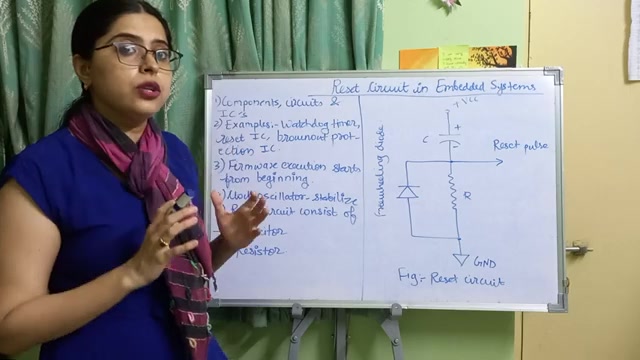
Hello , everyone .
I'm Shilakadeshpande , and welcome to my YouTube channel .
So today's topic is reset circuit in embedded system .
Today , we are going to see the reset circuit , what it is meant , and why it is necessary .
So let's get started without wasting much time .
Okay .
So there are some components , circuits , and ICs .
Now there are various electronic components , various circuits , and various ICs , and these are necessary for proper functioning of your controller or a processor .
For example , in our body , we have hands , we have limbs , we have nose , we have mouth , eyes , ears .
These are the organs which are necessary for proper functioning of the body .
So similarly , for the proper functioning of a controller or a processor , there are some parts which are necessary for its proper functioning .
What are the examples ?
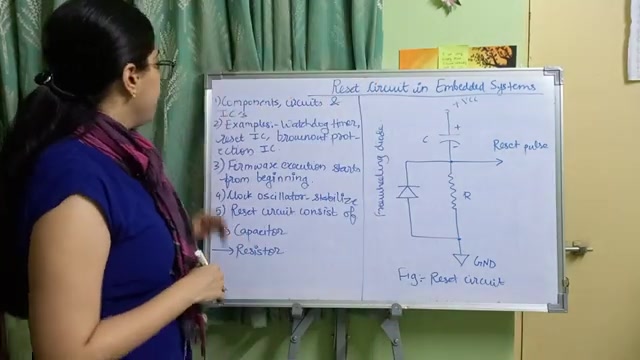
Let's see the examples .
Examples are watch lock timer , reset IC , brown rock protection IC .
So these are the examples of the ICs and circuits which are essential for the proper functioning of the processor or the controller .
Okay ?
Fine .
And in some , controllers , they are internally connected on the com inside the compact IC .
And in some processors or controllers , they are externally connected , but they are essential for the proper functioning .
Okay .
Now we will see these parts 1 by 1 .
We will see these circuits 1 by 1 .
In today's session , we are going to cover the reset circuit .
Okay ?
Fine .
Now what is a reset circuit 2 and what do we mean by reset ?
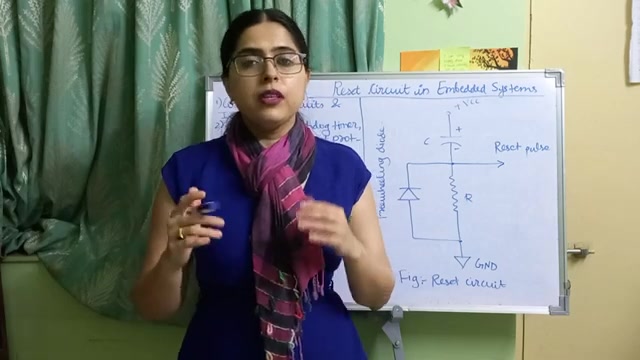
See , in the reset , what exactly happens is , your processor or controller brings the various registers and other hardware components inside it to known state and execution starts from the vector as 0 x 4zeros , 0 , 000 , 000 .
Okay .
Means the program execution starts from the vector address 0x0000 from the beginning .
Means program starts executing from the beginning .
Okay .
So for example , if there is any circuit board and you press while the program is running or , it is in the running state or an intermediate state .
And if you press the reset button , the program execution will start from the beginning that is a firmware starts from the beginning , okay .
Again , it goes to start and from the start it executes the whole code .
So that is the reset .
Okay .

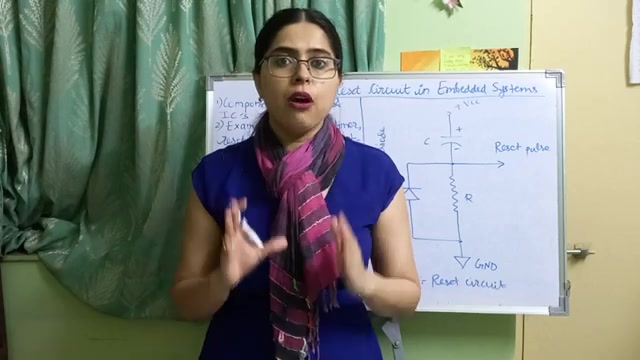
Now , there's a clock of selector and stabilization is , essential .
See , before resetting any circuit , it is very important that its block oscillator is stabilized .
Now why ?
The processor or controller works in synchronization with the clock pulses .
They work in synchronization with the clock pulses , okay .
And the reset pulse should be high enough , okay .
Because when the reset pulse is high enough , the time is given to the block oscillator circuit to stabilize .
Okay .
So reset pulse should be high .
It should be wide .
So the clock becomes it gets enough time to stabilize .
So before reset , the clock should be stabilized .
And there are 2 types of reset , active high reset and active low reset .
In active high reset , the switch is at logic high , and in the active low reset , the switch is at a logic low .
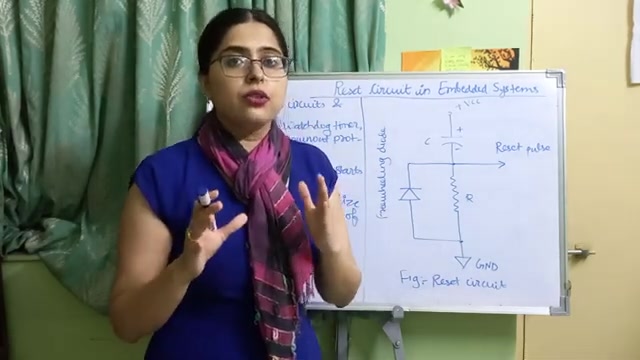
So there are 2 types of reset .
Okay .
Fine .
Now what does the reset circuit consists of ?
You can see the diagram on the right side .
There is 1 capacitor , there is 1 resistor , and there's a freewheeling diagram .
This is the diagram of the reset circuit .
External reset is essential to start the execution of a program which is , embedded in the uploaded on the processor from the beginning .
Okay .
And this is the circuit diagram of this reset circuitry .
Okay .
So it consists of the capacitor c , resistor r , and flip freewheeling diode okay and the pulse of the , reset circuit that is the active high pulse , its width .
The width of the pulse of the reset circuit can be adjusted by changing the values of the capacitance and the resistance .
If you change the value of a capacitance , if you change the value of resistance , if you adjust it in such a way that the reset pulse becomes wide enough , okay .
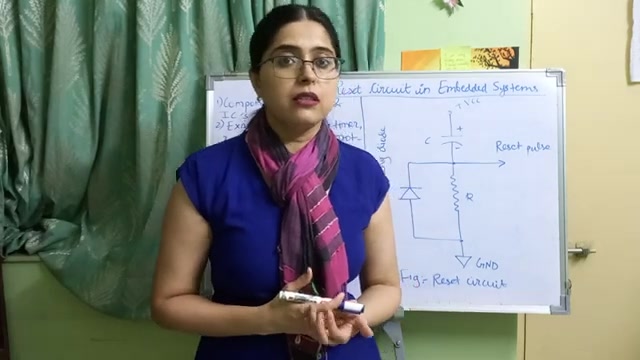
So , in this way we can change the width of the reset pulse by changing the value of capacitance and the resistance .
Now let's see the working .
Now what is happening ?
You can see the VCC is connected to the capacitor .
Okay .
Initially , the capacitor is charging .
You must have , known the concept of charging and discharging of the capacitor .
I would suggest that before , starting to before , reading the reset circuitry , before getting inside the working of reset circuitry , refer the working of a capacitance or capacitor in the basic electronics .
Okay .
I I'm assuming that you know the concept of charging and discharging of capacitor .
So initially by VCC , the capacitor is getting charged it's a passive component okay and when the capacitor is getting charged there is some voltage at this point .
Okay .
There is some voltage at this point and that voltage comes across this freewheeling diode .

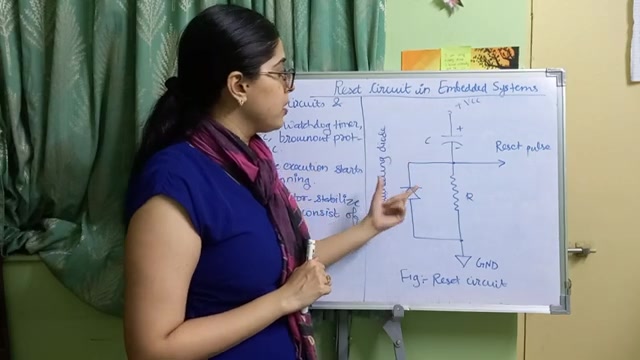
So when the capacitor is getting charged , there is some voltage across the freewheeling diode .
A particular value of voltage nothing but the voltage of the , value of the VCC .
The voltage is developed across this freewheeling diode .
Okay .
So when the voltage is developed across the freewheeling diode , we will call it as a logic high .
And after some times , when the capacitor is fully charged , it has to get discharged .
So capacitor gets discharged through this freewheeling diode , and the resistor is there to limit the amount of a current through freewheeling diode .
So when the capacitor gets discharged across this freewheeling diode the voltage across this freewheeling diode is 0 because current is a flowing through it we will call it as a logic low .
So in this way initially voltage is at logic high then the voltage is at logic low okay .
So what is happening logic high and logic low we will get the active high pulse here .
Okay .
We will have the active high pulse here .
Okay .
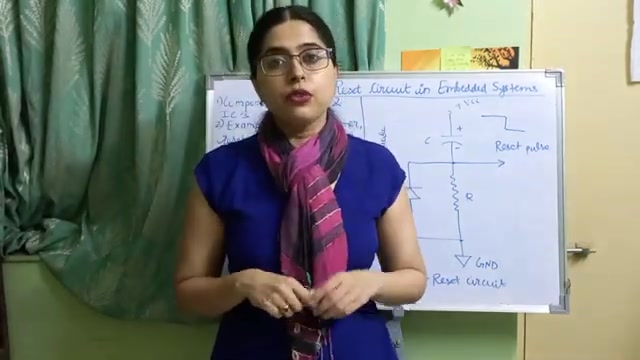
Charging and discharging of capacitor according to that , the voltages are developed across the free billing diode and we get the active high pulse at the output , which is given as input to the processor to reset it .
Okay .
So this is this was the working of the , reset circuit in the embedded systems .
I hope you like the video .
So thank you for watching .
Please like , share , and subscribe my channel .
Thank you .
Are you looking for a way to reach a wider audience and get more views on your videos?
Our innovative video to text transcribing service can help you do just that.
We provide accurate transcriptions of your videos along with visual content that will help you attract new viewers and keep them engaged. Plus, our data analytics and ad campaign tools can help you monetize your content and maximize your revenue.
Let's partner up and take your video content to the next level!
Contact us today to learn more.